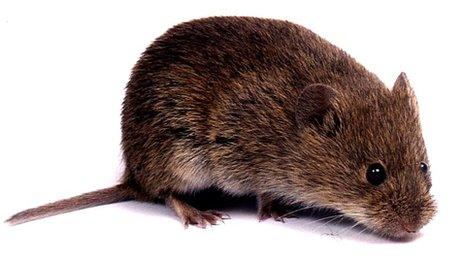'Giant' vole discovered during study on Guernsey
- Published
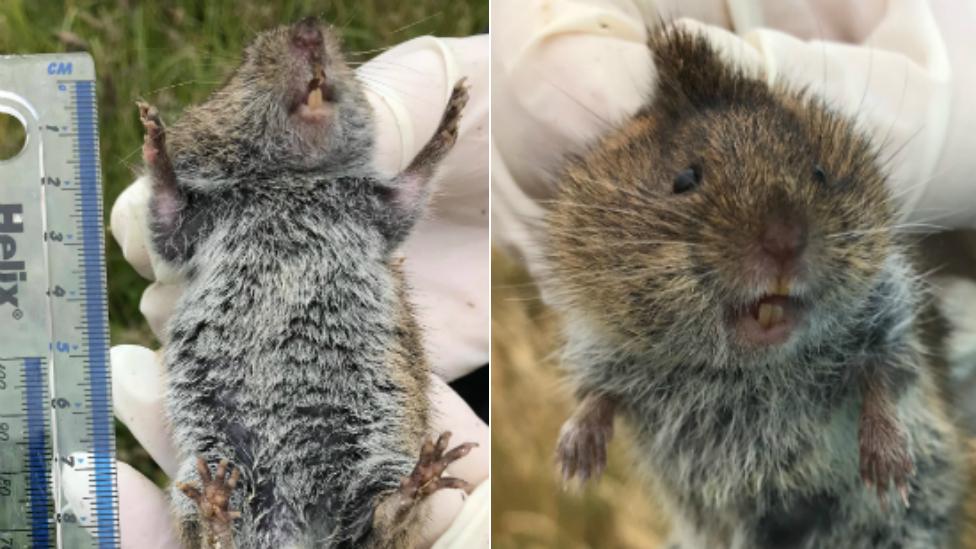
The vole was found during a recent study in the Channel Island of Guernsey
Researchers say a study into Guernsey's "giant" voles will help them understand why the island's rodents are so big.
The Channel Island's sub-species is typically 10% larger than its European neighbour, researchers revealed in their findings.
The largest vole found in the study measured 13.6cm (5.4in) in length, 2mm larger than the previous record, they added.
It is thought to be the largest European common vole ever recorded.
The giant vole was discovered during a two-month study of the island's small mammals, external for Imperial College, London, conducted between May and June.
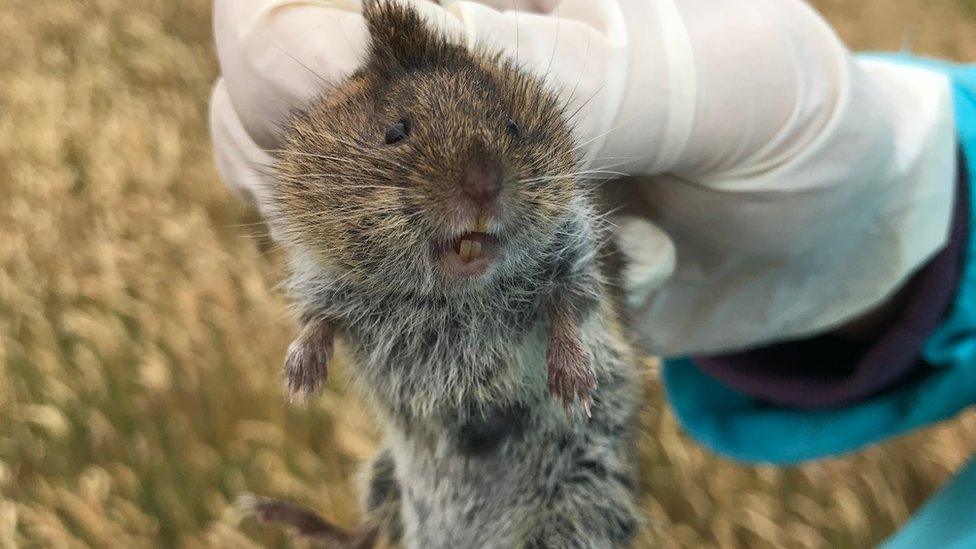
Guernsey's giant vole measured in at 2mm longer than the previous record
The researchers presented their findings in the island on Saturday.
They estimated there were approximately 150,000 Guernsey voles, more than double the number of people on the 25 sq mile (65 sq km) island.
Scientists have long been interested in why the common island voles, found only in Orkney and Guernsey, are so much larger.
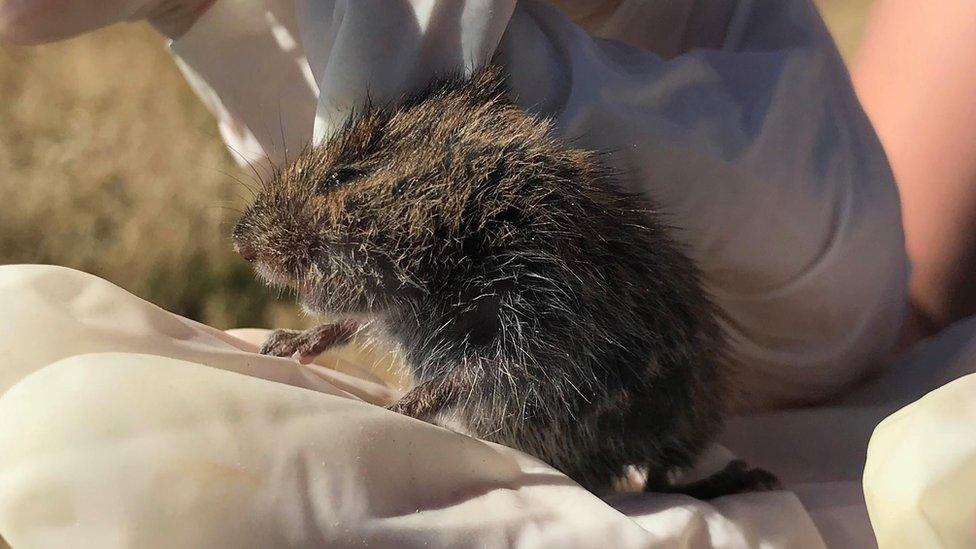
The voles were trapped "humanely" and returned to the wild, according to researchers
Researcher Alex Hayward said he hoped the new study will help them better understand their apparent "gigantism".
"It's significantly larger and we don't actually know why they're giants," he added.
"There's this idea of predator-prey hypothesis, so the reduced predation on the island means they can get larger and larger without having any problems."
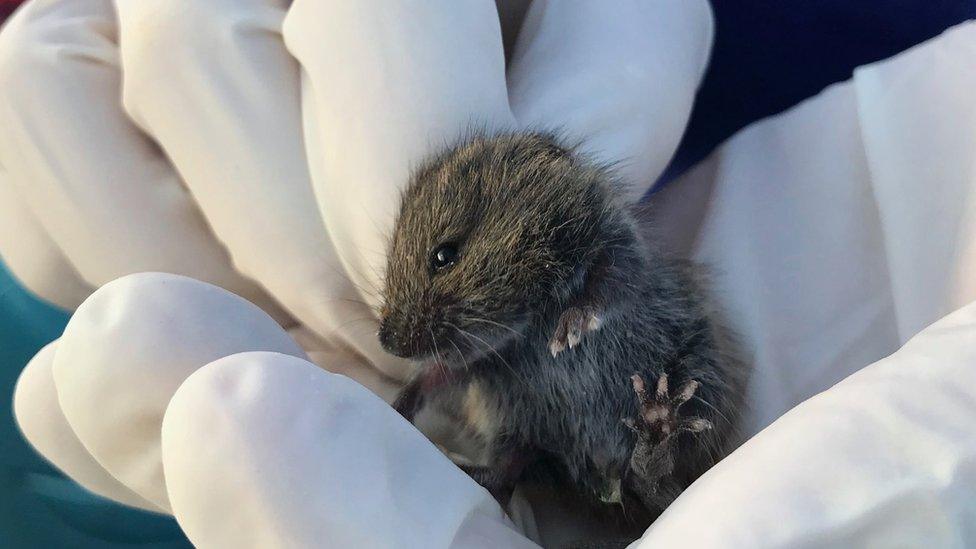
European common voles are typically about 10cm (4in) in length
Mr Hayward said the voles are found predominantly in grasslands and eaten by birds of prey, such as kestrels, buzzards and barn owls.
The largest single vole recorded was a large male, discovered in an area of grass close to Guernsey's main town, St Peter Port.
- Published21 April 2017
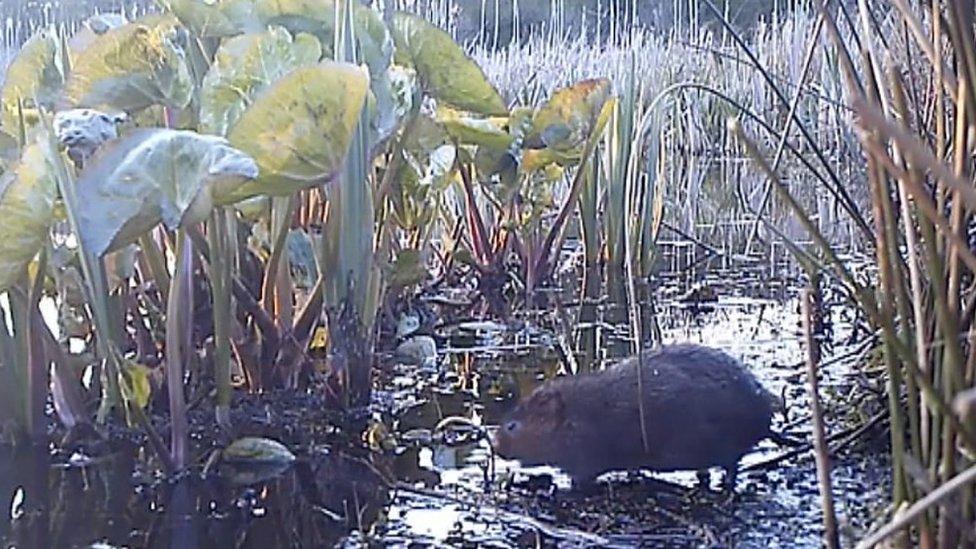
- Published12 June 2017
- Published3 September 2013
